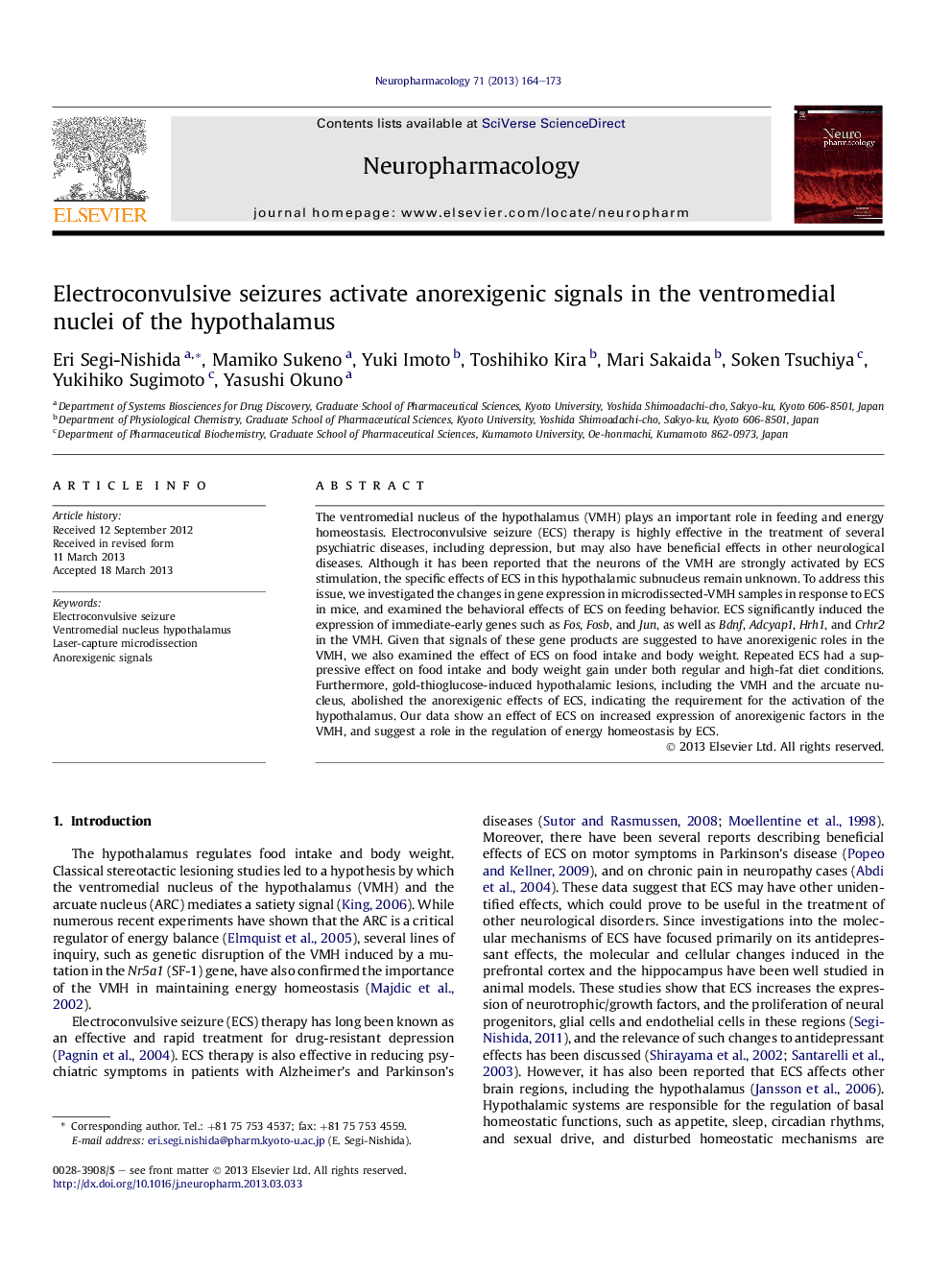| Article ID | Journal | Published Year | Pages | File Type |
|---|---|---|---|---|
| 2493423 | Neuropharmacology | 2013 | 10 Pages |
•ECS induced the expression of Bdnf, Adcyap1, Hrh1, and Crhr2 in the VMH.•Repeated ECS had a suppressive effect on both food intake and body weight gain.•Hypothalamic lesions, affecting the VMH, abolished the anorexigenic effects of ECS.
The ventromedial nucleus of the hypothalamus (VMH) plays an important role in feeding and energy homeostasis. Electroconvulsive seizure (ECS) therapy is highly effective in the treatment of several psychiatric diseases, including depression, but may also have beneficial effects in other neurological diseases. Although it has been reported that the neurons of the VMH are strongly activated by ECS stimulation, the specific effects of ECS in this hypothalamic subnucleus remain unknown. To address this issue, we investigated the changes in gene expression in microdissected-VMH samples in response to ECS in mice, and examined the behavioral effects of ECS on feeding behavior. ECS significantly induced the expression of immediate-early genes such as Fos, Fosb, and Jun, as well as Bdnf, Adcyap1, Hrh1, and Crhr2 in the VMH. Given that signals of these gene products are suggested to have anorexigenic roles in the VMH, we also examined the effect of ECS on food intake and body weight. Repeated ECS had a suppressive effect on food intake and body weight gain under both regular and high-fat diet conditions. Furthermore, gold-thioglucose-induced hypothalamic lesions, including the VMH and the arcuate nucleus, abolished the anorexigenic effects of ECS, indicating the requirement for the activation of the hypothalamus. Our data show an effect of ECS on increased expression of anorexigenic factors in the VMH, and suggest a role in the regulation of energy homeostasis by ECS.
